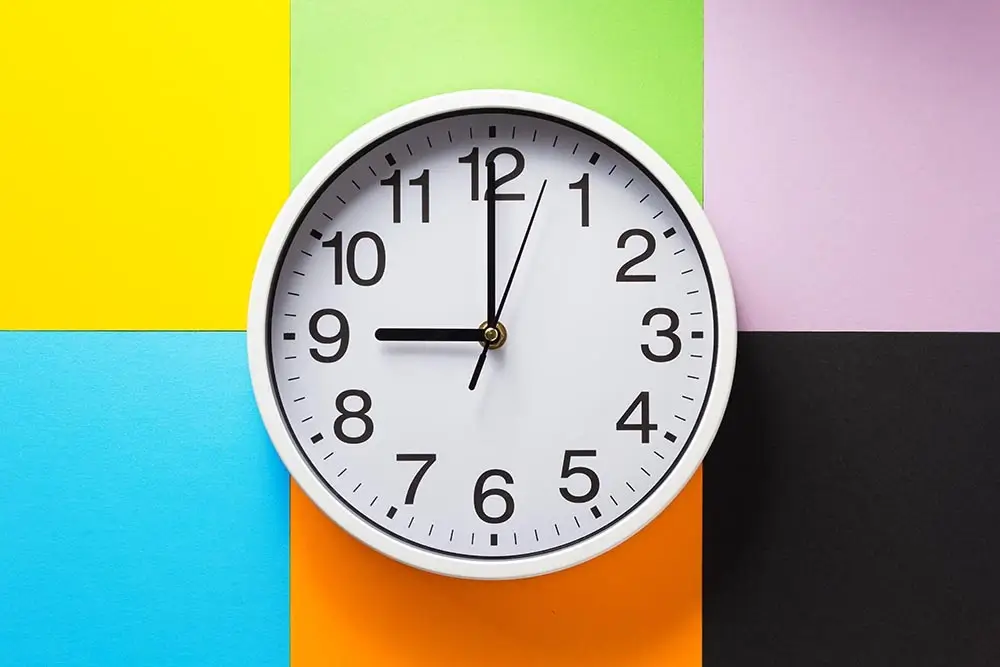Personalised meal plans work because they’re tailored to your unique body composition, metabolism, and goals. I’ve found that generic diets fail where customised approaches succeed by accounting for your specific macronutrient needs, eating patterns, and food preferences. By tracking your progress metrics and adjusting accordingly, you’ll break through plateaus that once seemed insurmountable. When combined with appropriate exercise, these individualised nutrition strategies deliver results and transform your relationship with food for sustainable weight management.
Key Takeaways
- Personalised meal plans account for your unique metabolism, genetics, and gut microbiome for sustainable weight loss results.
- Custom macronutrient ratios based on your age, activity level, and goals optimise fat loss while preserving muscle mass.
- Regular tracking of body composition metrics allows for timely adjustments to your nutrition strategy.
- Strategic protein pacing and carbohydrate timing tailored to your metabolism enhance weight loss effectiveness.
- Nutrient-dense foods prioritised in individualised meal plans provide essential micronutrients and fibre for energy and digestion.
Understanding Your Unique Nutritional Profile

Why does the same diet that helped your friend lose 20 pounds leave you feeling hungry and seeing minimal results? Because your body isn’t their body. Your metabolic rate, genetic makeup, gut microbiome, and lifestyle create a nutritional fingerprint that’s distinctly yours.
Your body tells a story through biomarkers like blood glucose, inflammation levels, and hormonal patterns. These indicators—combined with your activity level, sleep quality, and stress—determine how you process nutrients and store fat. Creating meal plans that account for your individual biochemical responses to different foods is crucial for achieving sustainable weight loss results.
Understanding your personal nutritional profile isn’t just helpful—it’s essential for weight loss success. Your FTO gene might affect how you respond to dietary fats, while your microbiome influences how you absorb nutrients.
Setting Realistic and Sustainable Weight Loss Goals
Setting realistic goals becomes your roadmap to success when you commence a weight loss journey. I recommend targeting a loss of 1-2 pounds weekly by creating a 500-750 calorie daily deficit. Even a 5% reduction in body weight significantly improves your health outcomes.
Focus on specific, achievable targets—start with just two or three to avoid feeling overwhelmed. Your short-term goals might be switching sodas for water or adding vegetables to each meal, while long-term aims could involve maintaining your progress through consistent habits. Choosing a definite start date helps establish the mental commitment needed for your weight loss program.
I’ve found that tracking your metrics, celebrating small victories, and adjusting your approach when facing setbacks keeps motivation high.
How Personal Trainers Enhance Your Nutrition Strategy
Personal trainers bring specialised expertise that transforms generic weight loss advice into a customised nutrition blueprint for your unique body.
I’ll analyse your eating patterns through food diaries and assessments to identify what’s truly happening with your nutrition.
I’ll help you prioritise nutrient-dense foods while monitoring your body’s response by calculating your specific energy needs and implementing a sustainable calorie deficit.
You’ll learn protein pacing techniques and strategic carb timing that work specifically for your metabolism.
I won’t just hand you a diet—I’ll teach you lasting habits through meal prep protocols and mindful eating practices. I’ll guide you in preparing meals in advance to have healthy options readily available throughout your busy week.
When plateaus hit (and they will), we’ll tackle them in conjunction with metabolic testing and adaptive strategies to keep you progressing toward your goals without feeling deprived.
Crafting Your Tailored Macro and Micronutrient Balance
Beyond simply counting calories, achieving your weight loss goals requires a precisely calibrated macro and micronutrient strategy tailored to your unique physiology.
I’ll help you establish personalised targets based on your age, weight, activity level, and goals using macro calculators. Your ideal ratio of proteins, carbs, and fats isn’t generic—it’s specifically designed for your body and lifestyle. For optimal accuracy, the calculator uses the NIH Body Weight Planner to determine your daily calorie requirements.
I recommend tracking your intake with apps like MacroFactor and adjusting as you progress. Remember, protein is vital for preserving muscle during weight loss, while strategic carbohydrate timing can effectively fuel workouts.
Don’t overlook micronutrients and fibre—they’re essential for energy, immune function, and digestive health.
The Science Behind Personalised Meal Timing

While many weight loss programs focus exclusively on what you eat, groundbreaking research now confirms that when you eat matters just as much for ideal results.
Your body operates on a natural rhythm—your personal circadian clock—that dramatically influences how efficiently you metabolise food.
I’ve seen incredible results when clients align their meals with their biological clocks. By shifting your eating window to earlier in the day and personalising your meal timing to match your chronotype (whether you’re an early bird or night owl), you can lose significant weight without changing what you eat.
Time-restricted eating, consuming most calories earlier in the day, and maintaining regular meal times all improve your body’s natural metabolic efficiency. A recent study showed that participants following regular mealtimes lost an average of 2.62 kg over six weeks without calorie restrictions.
The secret isn’t just calorie counting—strategic timing respects your unique biological rhythms.
Adapting Your Meal Plan Based on Progress Metrics
I’ll help you monitor your progress beyond the scale by tracking multiple body composition metrics that reveal true transformation rather than just weight loss.
You’ll learn to adjust your macronutrient ratios weekly based on how your body responds, increasing protein when preserving muscle mass becomes essential or adding complex carbs when your energy flags during workouts.
With data from body fat percentages, waist measurements, and weight trends, you can make intelligent adjustments to your meal plan that prevent plateaus and sustain your momentum.
Tracking Weight Changes
Tracking your weight consistently serves as the compass for your weight loss journey. It’s not just about numbers—it’s about gathering essential data that shows whether your personalised meal plan is working.
I’ve found that regular weigh-ins allow you to make timely adjustments to your nutrition strategy before you veer off course. When you notice steady progress, it fuels your motivation to continue; when weight plateaus, it signals the need for meal plan modifications.
Modern apps like Eat This Much offer convenient tracking tools that make this process effortless. They transform raw data into actionable insights for meal plan refinements.
Adjusting Macronutrient Ratios
As your weight loss journey evolves, adjusting your macronutrient ratios becomes the master key to revealing continued progress. When weight loss plateaus, I recommend shifting your macros by reducing carbs 5-10% while bumping protein to 30-35% of calories. This strategic pivot often reignites fat burning while preserving precious muscle.
- Feel energised again by matching your carb intake to your actual activity level
- Break through frustrating plateaus without sacrificing the foods you love
- Reclaim control by personalising your nutrition to your unique metabolic response
- Experience the freedom of flexible adjustments rather than rigid calorie restriction
- Transform stubborn fat stores into fuel by finding your ideal fat-burning ratio
Remember: track absolute grams, not just percentages, and give each adjustment 2-3 weeks before making further changes.
Measuring Body Composition
Monitoring body composition beyond simple scale weight is your strategic compass for steering successful weight loss.
I recommend choosing a consistent measurement method—whether it’s DXA scans for precision or simple skinfold callipers for convenience.
Track your progress using the same method regularly, as different techniques can yield varying results. Understanding metrics like fat percentage, lean muscle mass, and even bone density gives you powerful insights that a basic scale never could.
As your body composition changes, adapt your meal plan accordingly. When you see muscle mass increasing and fat decreasing, you’re on the right track—even if the scale doesn’t budge.
Overcoming Weight Loss Plateaus With Dietary Adjustments

Weight loss plateaus can frustrate even the most dedicated dieters. They often appear just when you’ve been consistently following your plan. When progress stalls, it’s time to adjust your dietary approach strategically.
I’ve helped countless clients break through these barriers by recalculating calorie needs, rebalancing macronutrients, and implementing mindful eating practices.
- Feel the liberation of breaking through stubborn plateaus that have held you back for weeks
- Experience renewed energy as your metabolism responds to strategic dietary adjustments
- Celebrate the victory of watching the scale move again after a discouraging standstill
- Enjoy the confidence that comes from mastering your body’s unique nutritional needs
- Welcome the freedom of a sustainable approach that works with your body, not against it
Don’t surrender to plateaus—they’re simply signals that your body is ready for the next challenge!
Integrating Exercise and Nutrition for Optimal Results

When exercise and nutrition work together, they create a powerful synergy that transforms weight loss journeys from struggles to successes.
I’ve seen countless clients achieve remarkable results by combining these two essential components rather than focusing on one alone.
Your workouts create calorie deficits while preserving lean muscle mass—something diet alone can’t accomplish.
Meanwhile, proper nutrition fuels your exercise performance and recovery. This partnership optimises your body’s fat-burning potential and improves overall health.
For best results, aim for substantial exercise (7+ hours weekly) coupled with a personalised nutrition plan that creates a sustainable energy deficit.
If you’re using weight loss medications like GLP-1 agonists, know that they work significantly better when supported by consistent exercise and balanced nutrition.
Building Lifelong Healthy Eating Habits for Weight Management

I’ve learned that the most successful weight loss journeys start with small, sustainable changes you can maintain for years, not just weeks.
When you practice mindful eating—focusing on each bite, recognising hunger cues, and eliminating distractions—you’ll naturally make better food choices and prevent overeating.
Understanding your food-mood connection can transform your relationship with eating. You’ll recognise emotional triggers and develop healthier responses that support your long-term weight management goals.
Small, Sustainable Changes
The journey toward lasting weight loss begins with small, manageable changes rather than drastic overhauls that rarely stick.
My clients achieve remarkable success when they focus on incremental adjustments that become second nature over time.
Think about swapping refined carbs for whole grains or gradually reducing processed food intake while increasing nutrient-dense alternatives.
- Replace your morning sugary drink with water infused with fresh fruit—feel the natural energy boost!
- Pre-portion your favourite snacks into containers—experience freedom from mindless overeating!
- Add one extra serving of vegetables daily—watch your satisfaction soar!
- Use smaller plates for meals—enjoy visual abundance while naturally consuming less!
- Establish a consistent 12-hour overnight fasting window—wake up feeling lighter and more focused!
Mindful Eating Practice
Mindful eating transforms your relationship with food by teaching you to savour each bite with intention and awareness. This practice helps you recognise genuine hunger cues, not just emotional triggers, leading to better weight management without strict dieting.
When you eat mindfully, you’ll naturally reduce overeating and emotional food choices. Turn off your phone, use all your senses, and chew slowly to experience each meal fully. This isn’t just about weight loss—it’s freedom from food guilt and stress.
Research shows that mindful eating contributes to sustainable weight loss when combined with other healthy practices. Recording your eating patterns can help you identify unhealthy habits and develop structured meals without restrictions.
Food-Mood Connection
Understanding your food-mood connection serves as an essential foundation for sustainable weight management and overall well-being.
I’ve discovered that recognising how emotions trigger eating patterns can transform one’s relationship with food. When one is aware of how stress activates cravings or how certain foods impact one’s mood, one gains power over unconscious habits.
- Break free from the cortisol-craving cycle that keeps you reaching for sugary comfort foods
- Reclaim control over emotional eating patterns that sabotage your weight loss goals
- Discover how gut health directly influences your mental clarity and emotional stability
- Transform your stress response without turning to food as your primary coping mechanism
- Experience the liberation of stable energy and mood through strategic meal timing
Don’t let emotions dictate your food choices. Take back your power today!
Frequently Asked Questions
How Much Does a Personalised Meal Plan Typically Cost?
I’ll help you budget for your freedom journey! Trainers typically charge £150-400 monthly for personalised meal plans, while dietitians charge £50-200 for consultations or up to £575 for month-long plans.
Can Personalised Meal Plans Accommodate Food Allergies and Intolerances?
Like a chef adapting to a finicky customer, I’ll customise your meal plan to accommodate any allergies or intolerances. I’ll create nutritionally balanced alternatives that keep you safe while still enjoying delicious, freedom-fueling foods.
How Long Before I See Noticeable Weight Loss Results?
You’ll likely see your first noticeable results within 4-6 weeks, though some people experience changes in 2-4 weeks. Your unique metabolism and how well you follow your plan determine your timeline.
Are Cheat Meals Allowed in Personalised Weight Loss Plans?
I do include strategic cheat meals in your plan. They boost metabolism, prevent burnout, and make your journey sustainable. Remember, it’s about balance, not restriction. Freedom with structure brings results!
Can I Follow a Personalised Plan While Dining Out Regularly?
I’ll help you navigate restaurant menus while staying on track. Your personalised plan will adapt to dining out, and I’ll show you smart choices that maintain progress without sacrificing social freedom.
Final Thoughts
I’ve transformed countless clients’ lives through personalised meal plans. Like Sarah, who lost 20 pounds by following a custom plan tailored to her insulin sensitivity, your journey can be just as successful. Start today by tracking your habits, consulting a nutritionist, and committing to your personalised approach. Remember, it’s not about perfection—it’s about finding the nutritional strategy that works specifically for your body and lifestyle.
